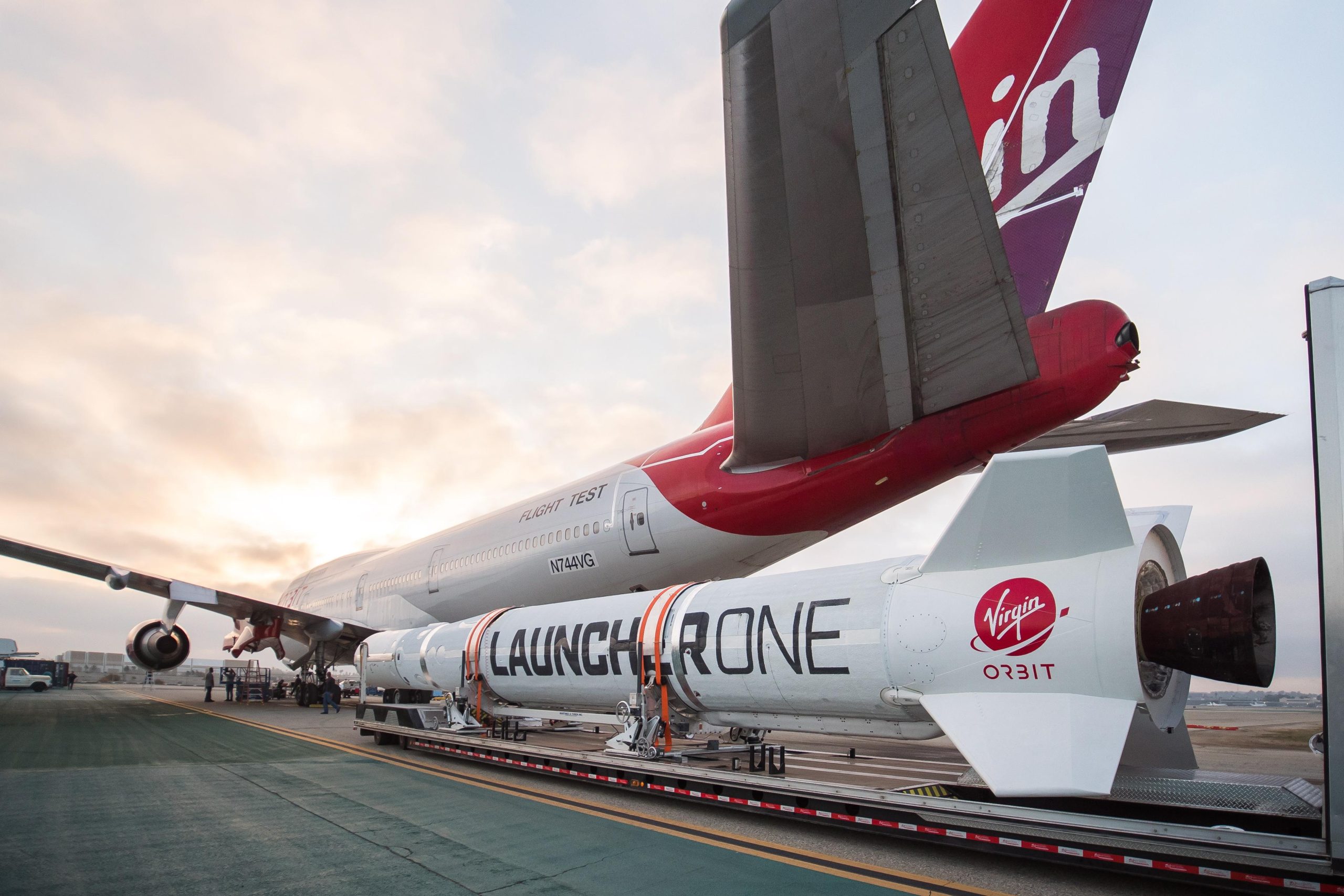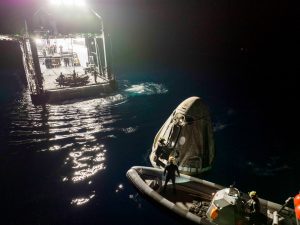Updated! 2023: Annus Horribilis For Space Launches?
16th Jun 2023
Update: Luna-25 Crashes on Russia’s First Lunar Mission in 50 Years
Roscosmos has had plenty of time to prepare their craft for a moon mission, but in August, the unmanned Luna-25 craft crashed into the surface of the moon.
Like India’s successful Chandrayaan mission, the craft was intended to land on the Moon’s south pole, but in the pre-landing process it ran into problems. In a statement, Roscosmos said that the lander “ceased to exist as a result of a collision with the surface of the Moon”
Russia’s space programme has been largely neglected due to the budget being funneled into the military in recent years. The craft launched from the eastern Amur region of Russia on 11th August, surviving just eight days before its crash.
“Every space mission is very risky and highly technical. It’s unfortunate that Luna-25 has crashed,” said a Roscosmos spokesperson.
Russia’s predecessor, the Soviet Union, had landed on the Moon, as had China and the US, but the goal of being the first to the Moon’s south pole came crashing down, quite literally. On 23rd August, India’s Chandrayaan-3 managed to safely touch down on in that region, where it continues to investigate and provide crucial scientific data.
Regarding Annus Horribilis
2023 has certainly been eventful when it comes to space launches. For the UK space industry, it could be seen as anti-climatic, with the high-profile Virgin Orbit UK rocket launch failing in January to get the year off to a shaky start.
There has been a flurry of activity in the industry, with things moving quickly, but reading through some space news stories means reading up on many failures, cancelled launches, and “anomalies” causing problems for planned space launches.
Joshua Western provided a stark warning to the science and technology select committee, “Quite frankly it costs us more to license our satellite for launch than it did to launch it,” Western told the committee following the LauncherOne, and chair of the committee, Greg Clark, even described the UK as “toxic for a privately funded launch”.
It isn’t just the UK that has seen some misfortune in 2023 launches, and whether the fledgling British private space industry really is “toxic” is up for debate. However, it has certainly been a challenging year as we explore below.
Starting the Year With a Bang (But Not The Good Kind)
It started with so much promise. Start Me Up was more a “Start Then Stop” as the mission, which had been planned for for some years, failed due to a simple anomaly.
Virgin Orbit’s Launcher One rocket may have been built in the US, but it was referred to as the first rocket launch from UK soil and took off from the Cornwall Spaceport under a modified Boeing 747.
Having climbed to 35,000 feet, the rocket was released, before an anomaly prevented the second stage and the extensive and expensive payload of nine satellites didn’t make their orbit, probably burning up on the way to a watery grave.
On 10th January, ABL Space Systems launched its RS1 rocket from the U.S. state of Alaska, but the engines (all nine of them) stopped functioning and the rocket crashed on its launch pad, causing significant damage but thankfully no fatalities.
ABL creates vehicle and launch systems technology that is based around using CNC and 3D printing, but this launch failed to prove their concept. A bad week for space travel.
Before any of these failed launches, we’d seen the breakup of the Kosmos 2499 satellite, which has since been catalogued as causing 85 associated pieces of space debris orbiting at 726 miles altitude.
In February we saw launches from SpaceX including the Falcon 9 Block 5 as it builds the Starlink network with great success, and Roscosmos and the China Aerospace Science and Technology Corporation put satellites in orbit.
But then came March.
The H3 Launch Vehicle, a Japanese launch system, carrying the Advanced Land Observing Satellite 3 (ALOS-3), also called Daichi 3, failed to send the satellite into orbit.
The first launch attempt was on 17 February 2023, but was aborted seconds before liftoff as a failure in sending ignition signals led to additional tests and work being needed. When the launch took place on 7th March, the lift-off was as expected, until the second stage ignition did not confirm, leading to a destruct command and the failure of this exciting Japanese mission.
At 8 minutes, 31 seconds into the flight, the controllers announced they were unable to confirm the second stage ignition. The craft’s gain in altitude had then slowed to 392 miles (631 km) and the rocket eventually fell back to earth.
With plenty more H3 launches in the diary, the errors will surely need to be addressed.
Relativity Space’s Terran 1 was due to launch from Cape Canaveral on Wednesday, March 22. This was another rocket that was made almost entirely of 3D-printed parts, helping to prove the concept of 3D-printed space travel, and its feasibility.
The rocket failed just three minutes into its first flight, way before it reached its target altitude. It wasn’t carrying a payload as this was a test flight, but it was once again the second-stage that caused the problems.
The plan was only ever for the craft to reach orbit for a few days before being sent crashing down deliberately, but it did not manage this. It was actually the third launch attempt of the rocket, and while it wasn’t a total success, the fact that the first stage did its job is something.
“Maiden launches are always exciting and today’s flight was no exception,” said Relativity Space launch commentator Arwa Tizani Kelly. The mood wasn’t all negative.
Relativity retired the Terran 1 in the wake of this, focusing on the reusable Terran R vehicle.
Virgin Orbit Bankruptcy, SpaceX Starship Failure
Virgin Orbit declared Chapter 11 bankruptcy on April 4, 2023. The LauncherOne has been retired meaning that the failed launch from the UK back in January will be the last flight of the modified craft.
Virgin Orbit may return in some form. Their assets have been sold, but the remaining team and technology still have a value, CEO Dan Hart explained: “we believe that the cutting-edge launch technology that this team has created will have wide appeal to buyers as we continue in the process to sell the Company. At this stage, we believe that the Chapter 11 process represents the best path forward to identify and finalise an efficient and value-maximising sale… We remain committed to working with our investors and creditors throughout this process to achieve an optimal outcome for everyone.”
Later in April, SpaceX launched a prototype of the Starship, with the goal of reaching orbit around the Earth and then reentering the atmosphere and performing a controlled landing in the Pacific.
The launch did not go to plan
The vehicle lifted off, which made it the most powerful and tallest rocket ever to be flown. However, some of the engines had failed to ignite, meaning it slid off the launchpad in an unexpected fashion, before more of the engines would fail during the flight. Communications were lost with one of the engines within 27 seconds of the flight and shortly after there was a visible small explosion.
After eighty-five seconds the ability to control the rocket was totally lost and the flight termination system had to be activated. However, the Starship didn’t disintegrate as expected. No injuries or even property damage was reported.
The SpaceX team had already explained that it was a test, but the loss of a craft was a huge blow. Their social media team was certainly buoyant. They tweeted the following: “With a test like this, success comes from what we learn, and today’s test will help us improve Starship’s reliability as SpaceX seeks to make life multi-planetary.”
Into May, when it was the North Koreans’ turn for a failed launch. Their craft, Chollima-1, made its first launch attempt, from Sohae Satellite Launching Station. The mission aimed to send the mysterious Malligyong-1 into orbit, but the second stage was ignited too early into the mission. The launch vehicle itself would come crashing down, and the South Korean Ministry of National Defense then found what appears to be a rocket stage object in the sea close to Eocheong Island.
A Very Bad Year?
There have been many challenges to the industry besides the bankruptcy of one of its key players and failed launches (with some significant financial implications).
There have been delays to planned flights and many of the space flights that have been ambitiously pencilled-in for 2023 may well get pushed back to 2024, but has it been a bad year for the industry?
Space launches are often an iterative process, and this can mean that it is necessary to take the hit on some losses. Sadly, we have lost a huge number of satellites in the failed launches, and Virgin Orbit was a blow to many of the companies who have spent years creating their satellite offerings.
The feeling of a new craft being plunged into the ocean once every month might feel like that because of the fact that there are more launches taking place. At the time of writing, there have been 80 successful launches and six that were failures, and with some of the failures being accounted for by newer launch venues and companies, it is fair to say that the future is far from bleak, though the industry will require support, as will some of the companies that have experienced hardships.






Thank you for your comment! It will be visible on the site after moderation.